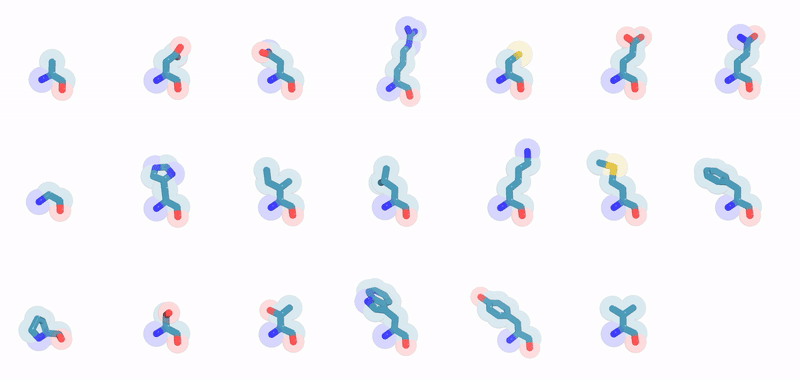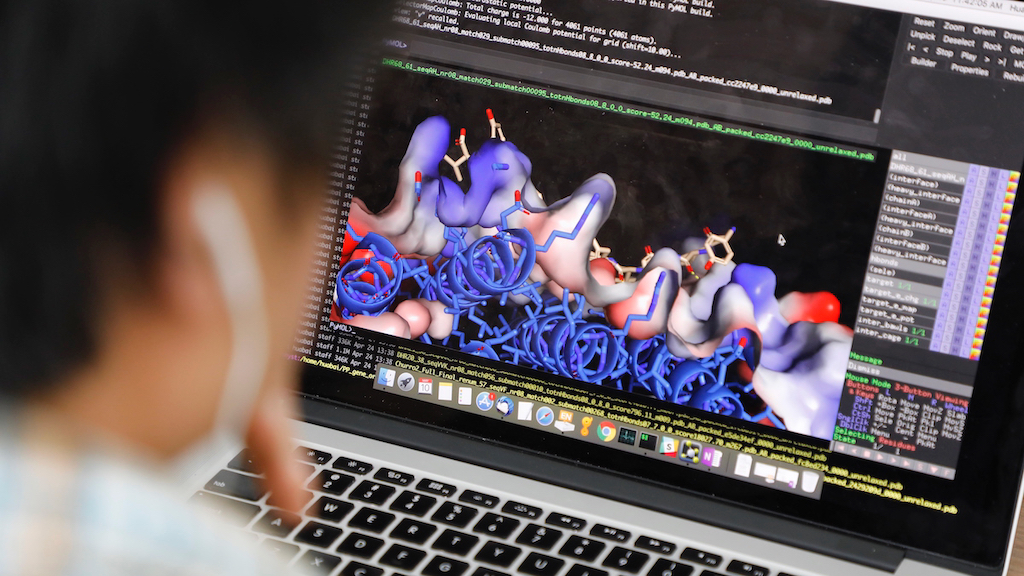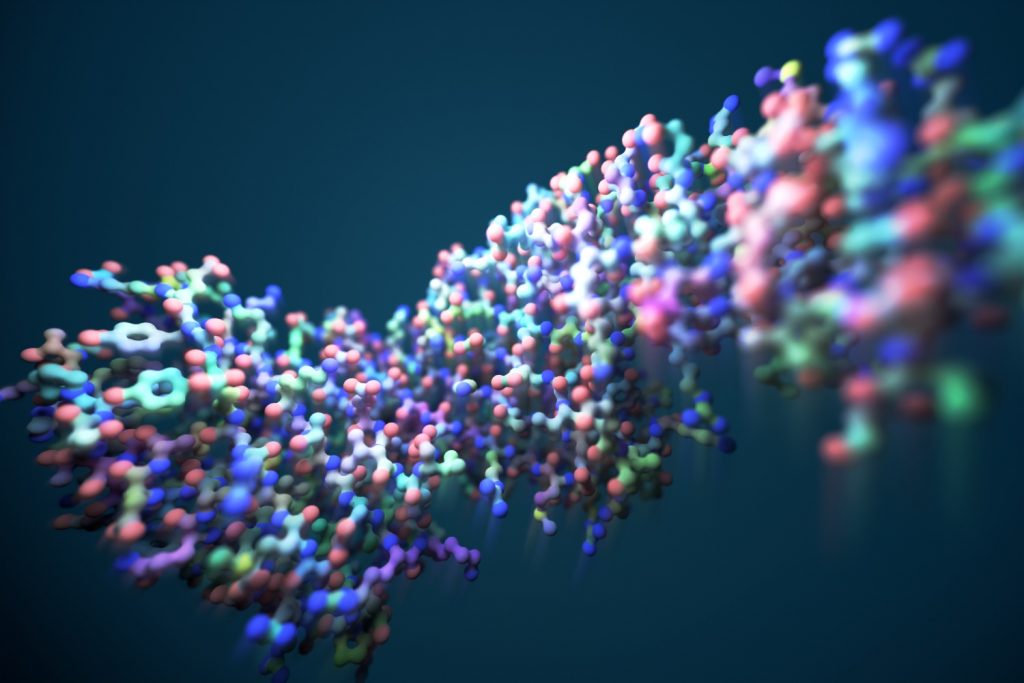Protein design is a rapidly changing field at the forefront of science with the potential to revolutionize medicine, technology, and environmental sustainability. But what is protein design, and how does it work?
In this post, we will delve into the basics of protein design, explore its real-world applications, and learn about the interdisciplinary nature of this fascinating field.
The Building Blocks of Life
Proteins are tiny molecules that play an enormous role in biology. They are found inside every living thing and act as structural components, transporters, signaling molecules, and much more.
For example, collagen, the most abundant protein in the human body, provides structural integrity to our skin, bones, and connective tissues. Meanwhile, insulin, a hormone produced by the pancreas, helps regulate blood sugar levels by signaling cells to take in glucose from the bloodstream.
Proteins also play a crucial role in our immune system. Antibodies are proteins that recognize and neutralize foreign substances like bacteria and viruses, protecting us from infections. On the other hand, enzymes, which are also proteins, speed up countless chemical reactions in our bodies, allowing us to digest food, synthesize DNA, and produce energy.
Your body contains trillions of individual protein molecules that together perform the vital functions of life. In total, your DNA contains the blueprints for crafting about 20,000 unique types of protein – a collection known as a genome.
Your DNA contains the blueprints for crafting about 20,000 unique proteins.
Although their functions are diverse, all proteins in nature stem from the same building blocks. Life as we know it creates proteins from a shared set of chemicals called amino acids. Picture these as the letters of an alphabet that, when reordered correctly, form a vast array of distinct “words.”

The precise order of amino acids in a protein chain, like the letters in a word, is crucial. The unique functions of a protein stem from its three-dimensional structure, which is determined by the sequence of amino acids composing the protein.
Protein design is the process of creating new proteins with specific properties by manipulating the sequence of amino acids. It involves a combination of computational techniques, laboratory experiments, and interdisciplinary knowledge from fields such as biology, chemistry, and physics.
The world of proteins is incredibly complex, offering endless possibilities for exploration and discovery.
The Role of Computation
One of the most critical tools in protein design is computational modeling. Advanced software, like the Rosetta suite, empowers scientists to predict how a given amino acid sequence will fold into a three-dimensional structure. By simulating various sequences and analyzing the resulting structures, researchers can design proteins with desired functions or properties.

In addition to predicting protein structures, computational methods also allow scientists to simulate how proteins will interact with other molecules. This information is vital in refining protein designs to optimize their stability, binding affinity, or catalytic activity.
In recent years, machine learning has proven to be a powerful way to model and design proteins on the computer. Rather than having human experts try to encode their knowledge into software, this strategy allows computers to train themselves to detect patterns in proteins. Recognizing the impact of this innovation, the journal Science dubbed the application of machine learning to protein science their 2021 Breakthrough of the Year.
“I never thought I’d see this in my lifetime.”
Structural Biologist John Moult on the 2021 Breakthrough of the Year
Real-World Applications of Protein Design
The potential applications of protein design are vast and varied, spanning numerous industries and disciplines. Some of the most promising areas include:
- Medicine: We use design to develop therapeutics with high specificity and low toxicity. Our researchers have crafted proteins that selectively bind to cancer cells and others that inhibit viral infection, paving new paths for drug development.
- Vaccines: Our scientists are fashioning self-assembling protein nanoparticles that act as highly effective vaccines. These synthetic proteins mimic the structure of viral proteins, stimulating a robust immune response without the need for live viruses.
- Environmental Sustainability: We’re investigating how novel proteins can be used to create new biodegradable materials, sequester carbon, and break down environmental pollutants, offering innovative solutions to environmental challenges.
The Interdisciplinary Nature of Protein Design
Protein design weaves together principles from biology, chemistry, and physics, allowing researchers to create novel molecules with remarkable precision and functionality.
Biology: The Molecular Basis of Life
The foundation of protein design lies in the principles of molecular biology. By studying the genetic code and the mechanisms underlying protein synthesis, researchers can manipulate the sequences of amino acids that make up a protein. This knowledge enables scientists to create proteins with specific functions, such as binding to target molecules, catalyzing chemical reactions, or forming stable structures.
Bioinformatics and computational biology are crucial components of protein design. These sub-disciplines involve the development and application of algorithms and software tools to analyze biological data, enabling researchers to predict protein structures, identify potential target sites for modification, and model the behavior of designed proteins.
Chemistry: Decoding the Rules of Protein Folding
Chemistry plays a vital role in protein design by helping researchers understand the forces and interactions that govern protein folding. Protein folding refers to the process by which a linear chain of amino acids folds into a three-dimensional structure, which determines its function. Understanding the rules of protein folding allows us to design proteins that adopt their intended structures and exhibit desired functions.
Moreover, chemistry allows researchers to explore the vast chemical space of possible amino acid sequences and develop strategies for the rational design of proteins with novel properties. Techniques such as directed evolution, which uses iterative rounds of mutation and selection to evolve proteins with enhanced functions, are rooted in the principles of chemical biology.
Physics: Simulating and Predicting Protein Behavior
The principles of physics play a crucial role in protein design, particularly in the development of computational models and simulations. By applying concepts from statistical mechanics, thermodynamics, and molecular dynamics, researchers can predict how a protein will fold and interact with other molecules in its environment.
Advanced computational techniques, including novel machine learning algorithms, allow our scientists to model the behavior of proteins at the atomic level. This knowledge helps researchers generate novel proteins with optimized stability, binding affinity, or catalytic activity.
As the field of protein design continues to evolve, the collaboration between these disciplines will remain crucial in realizing its full potential.
Limitless design
Protein design, with its interdisciplinary nature and wide-ranging applications, is poised to reshape the future of synthetic biology. By leveraging the power of computational modeling, our researchers are creating solutions to some of the most pressing challenges in medicine, technology, and sustainability.
As we continue to unlock the secrets of proteins and learn to harness their potential, the possibilities for protein design are virtually limitless.

